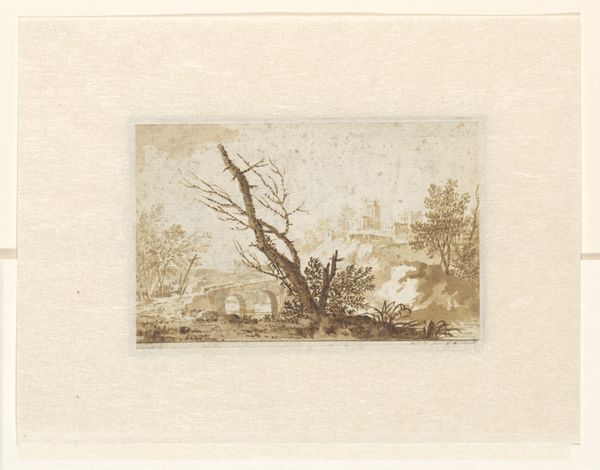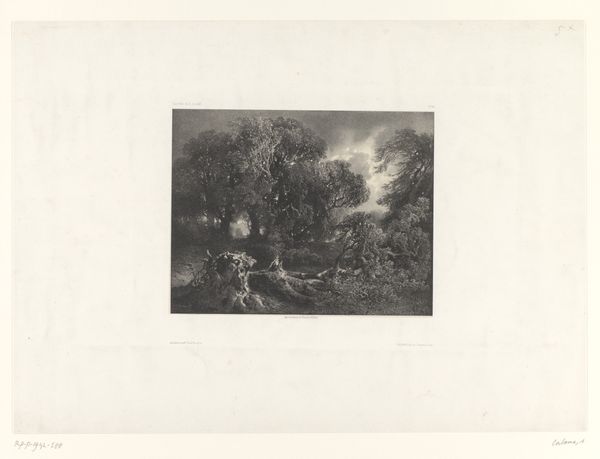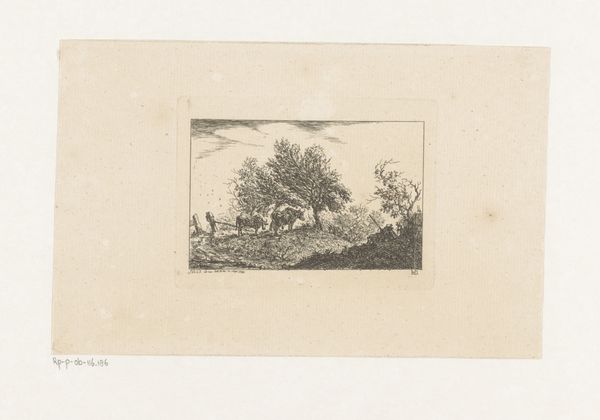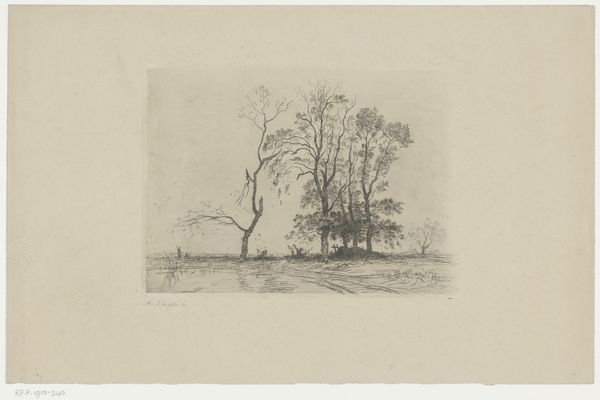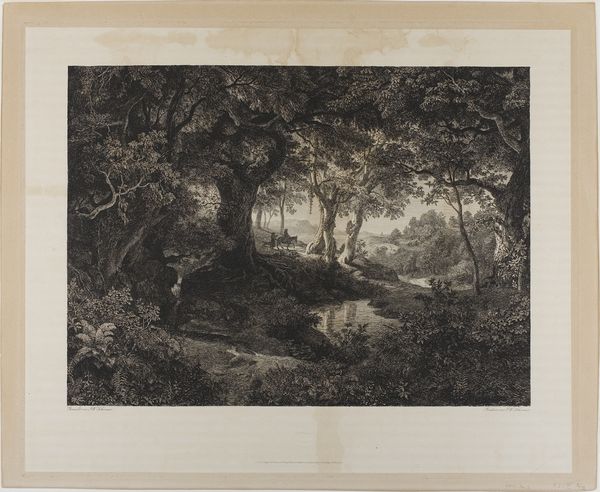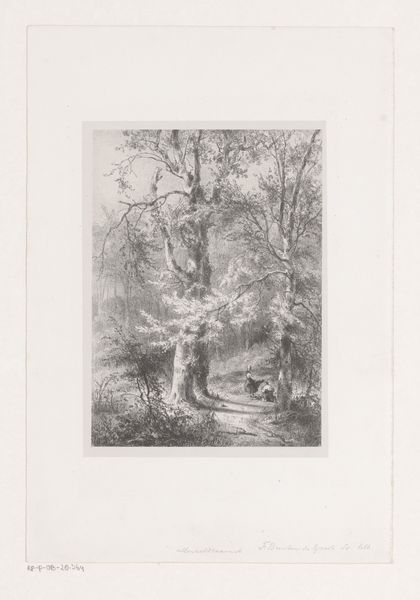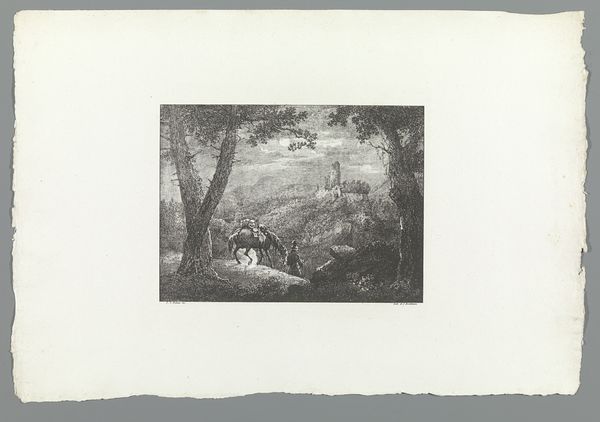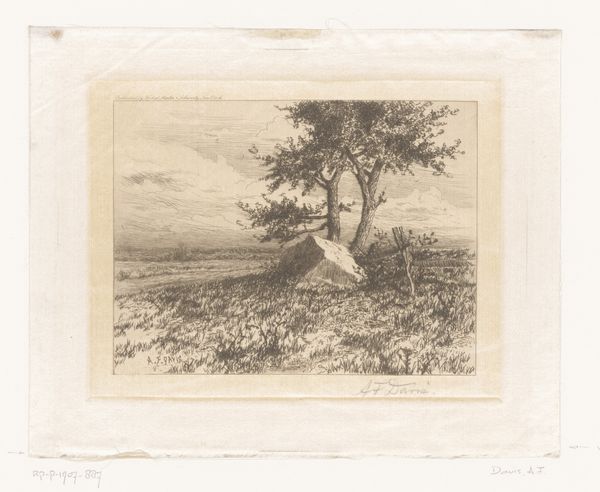
Dimensions: 283 × 382 mm (image, primary support); 430 × 560 mm (secondary support)
Copyright: Public Domain
Editor: Here we have James Duffield Harding’s lithograph from 1860, "South Brent, from Picturesque Selections." The combination of detailed linework and soft shading gives it a very serene, almost ethereal quality. What stands out to you in this piece? Curator: The composition is meticulously structured. Note how the artist employs two distinct scenes on a single plane, yet a unifying tonal range creates a visual harmony. Each vignette, while different in subject, uses similar compositional strategies, specifically the interplay between light and dark. Do you perceive how the graphic elements act almost like mirroring devices? Editor: I see it. The trees in both halves are dominant vertically and appear similar in size. So, is that symmetry intentional? Curator: One might interpret the symmetry as intentional to invite comparison and visual interest rather than to precisely replicate something observable. Focus on the relationship of form to form; how the textural contrast emphasizes a sense of depth in both scenes. The lithographic medium enables nuanced graduations of tone. Editor: It's amazing how much detail he got with just a lithograph. How important is the medium itself here? Curator: Critically important. Harding's skill with the lithographic crayon enables him to create atmospheric effects and nuanced textures not readily achievable through other printmaking techniques. It pushes the pictorial possibilities inherent within the medium. Note the romantic aesthetic, seen in the soft gradations and picturesque landscape. It emphasizes visual qualities above a mere literal transcription. Editor: I didn't realize how much the technical aspects contribute to the overall aesthetic. Looking at it that way makes the piece much more impressive. Curator: Indeed. By examining the formal elements—the tonal range, the compositional arrangements, the artist’s employment of the lithographic process—we are able to perceive not just what is represented, but how that representation attains artistic merit.
Comments
No comments
Be the first to comment and join the conversation on the ultimate creative platform.
